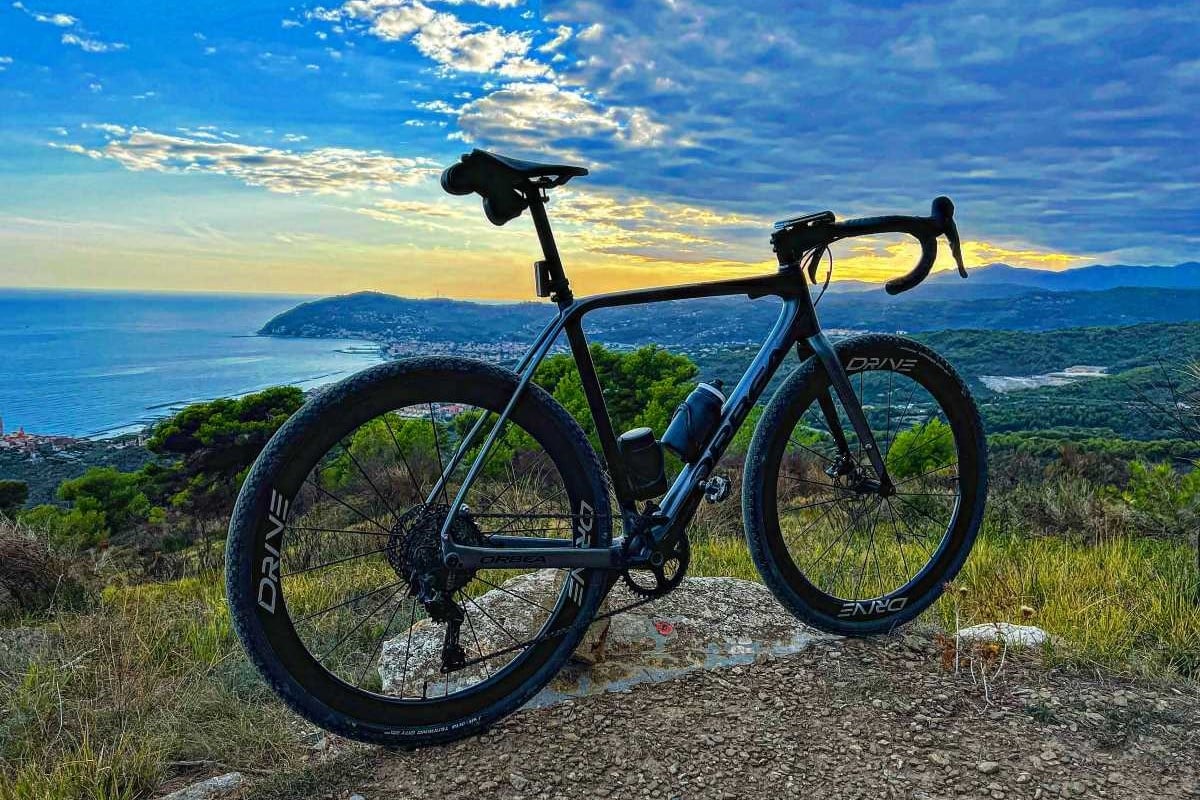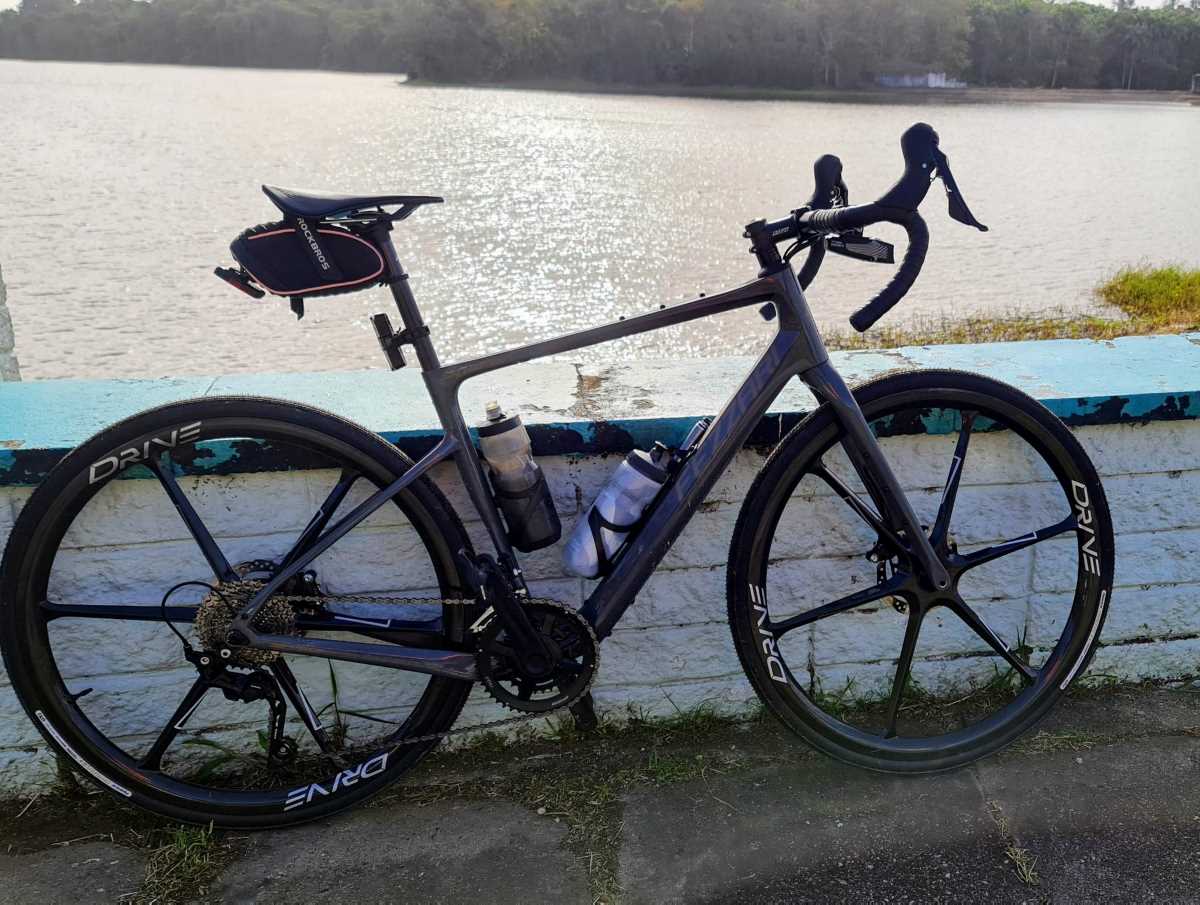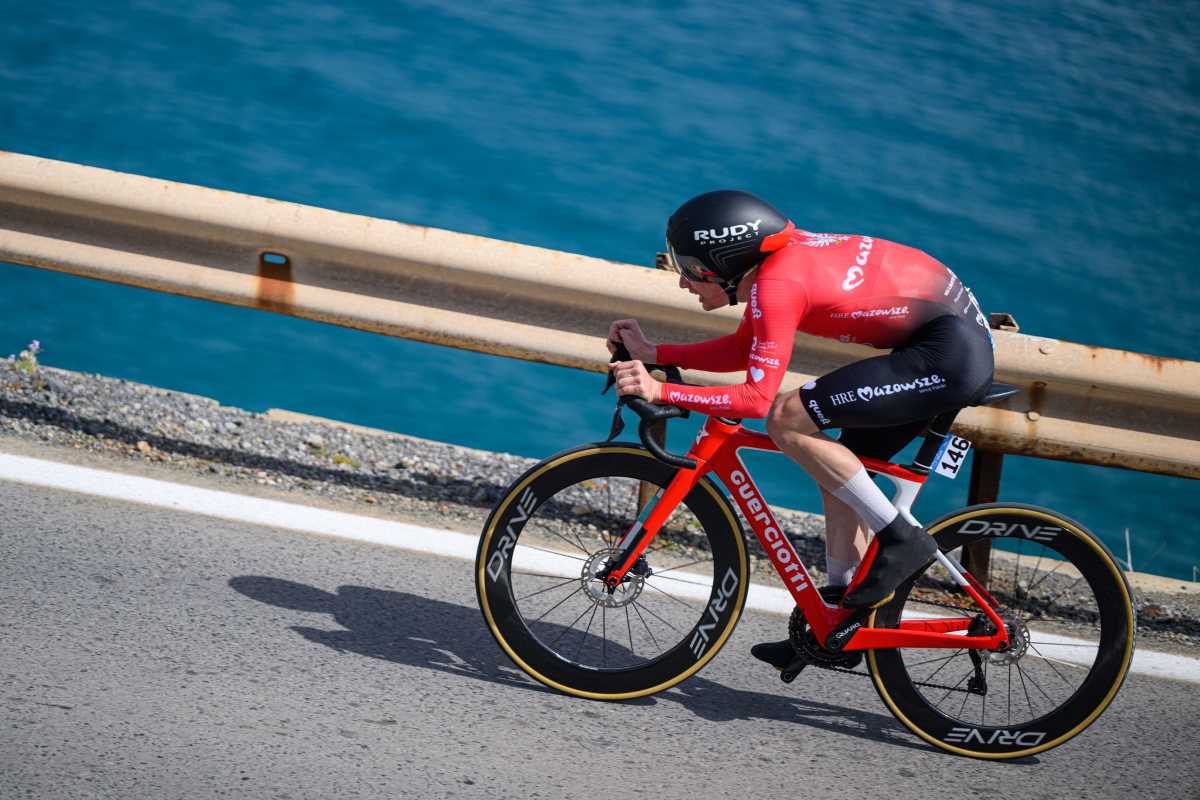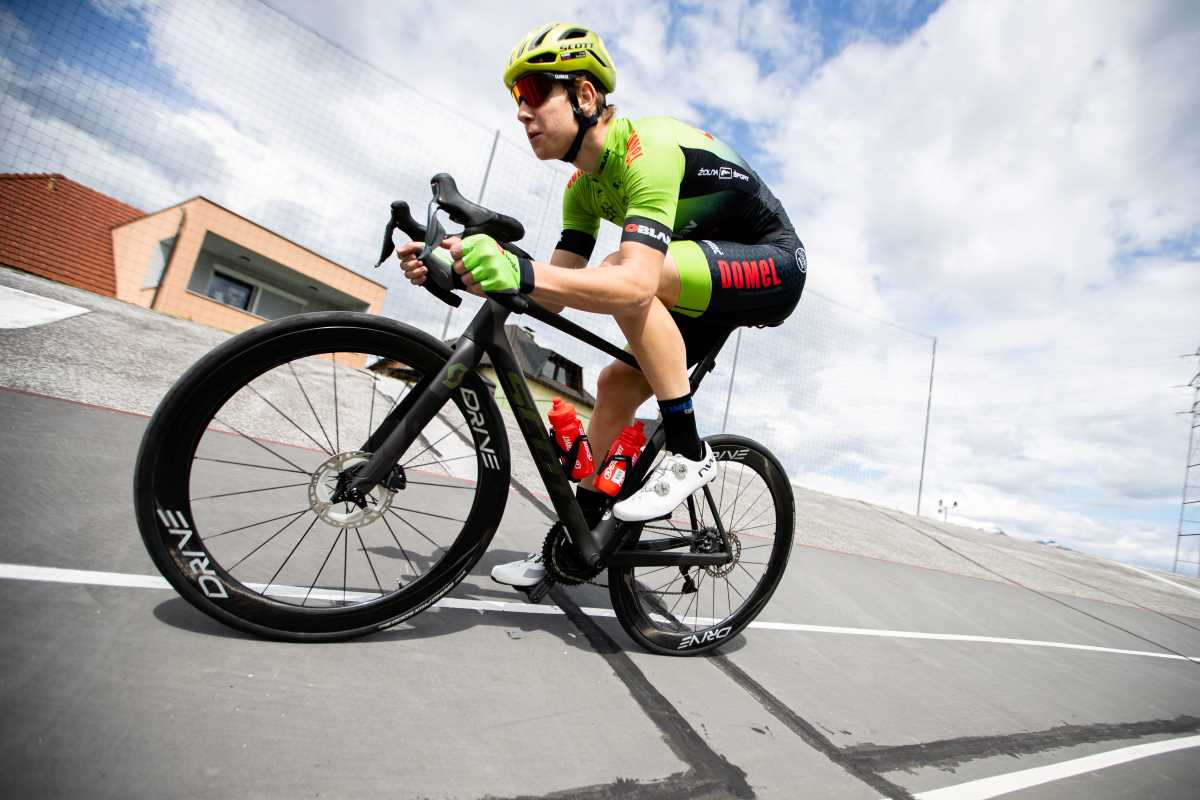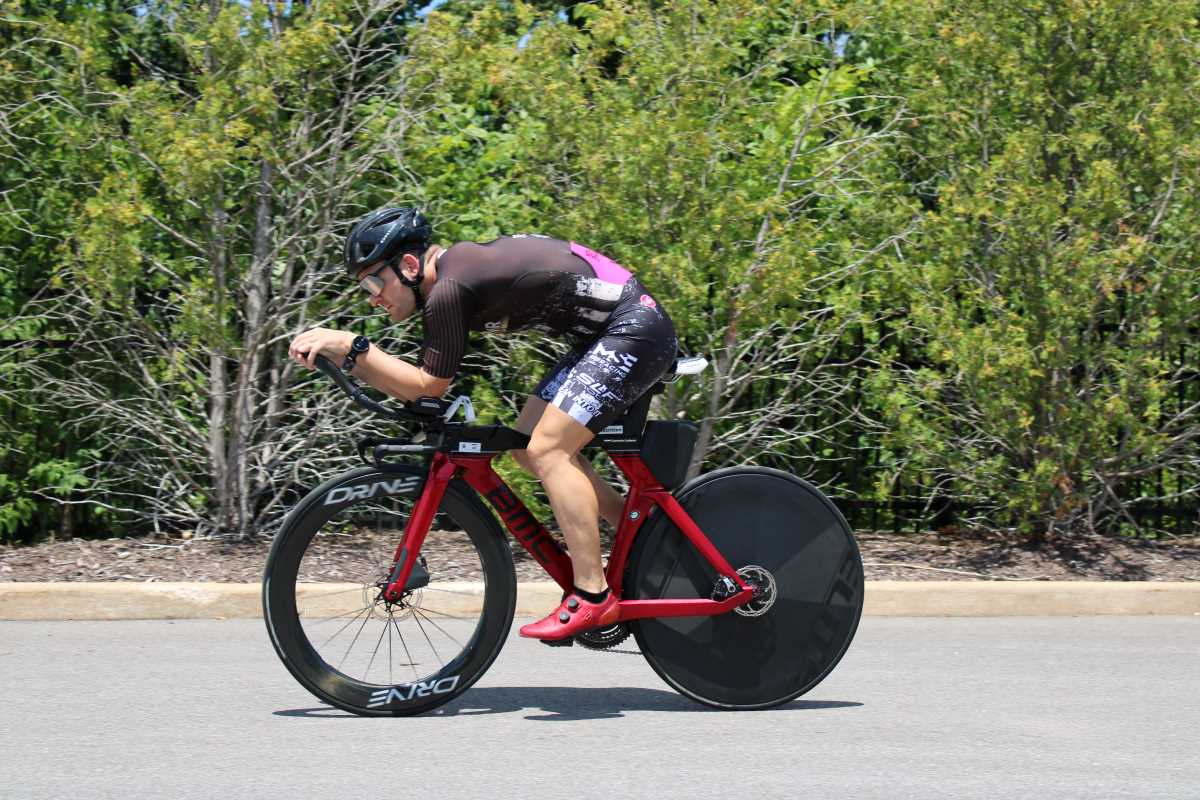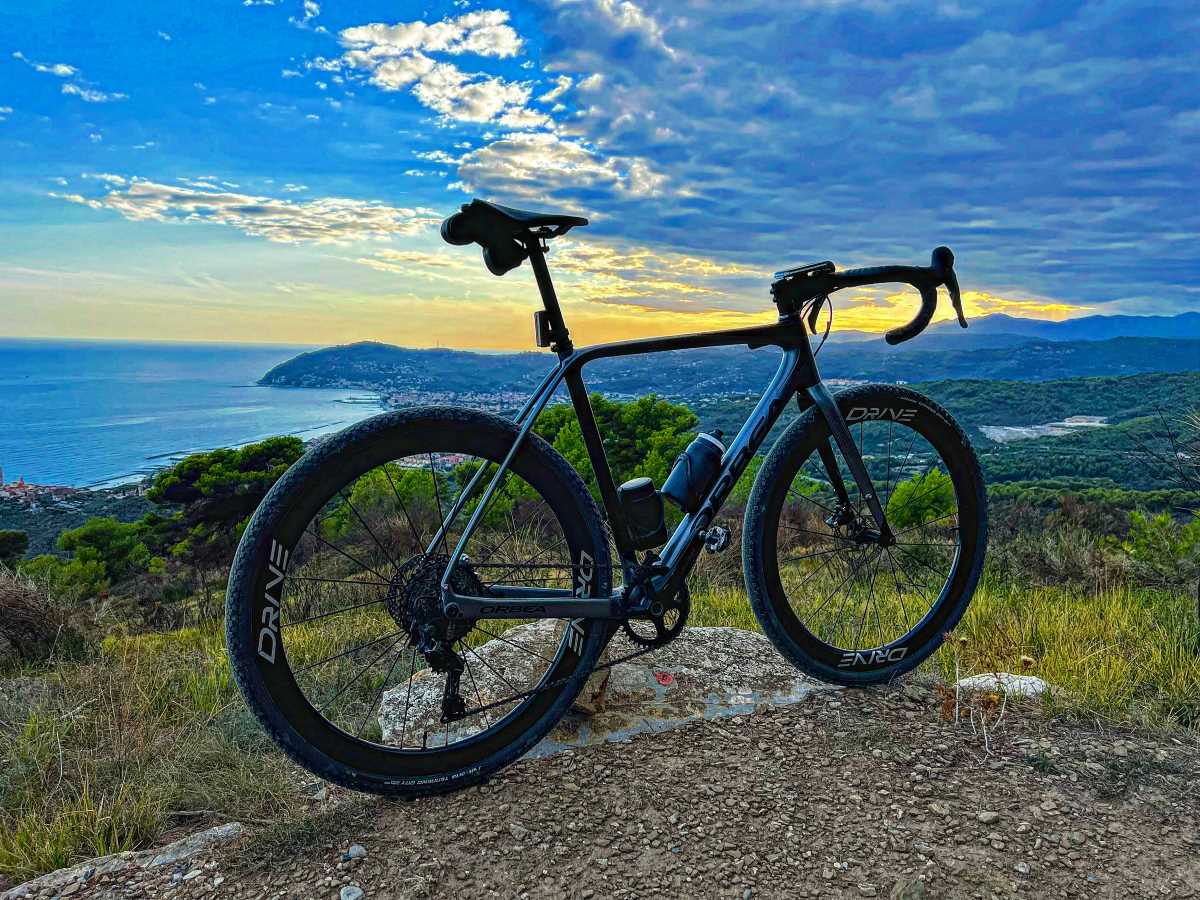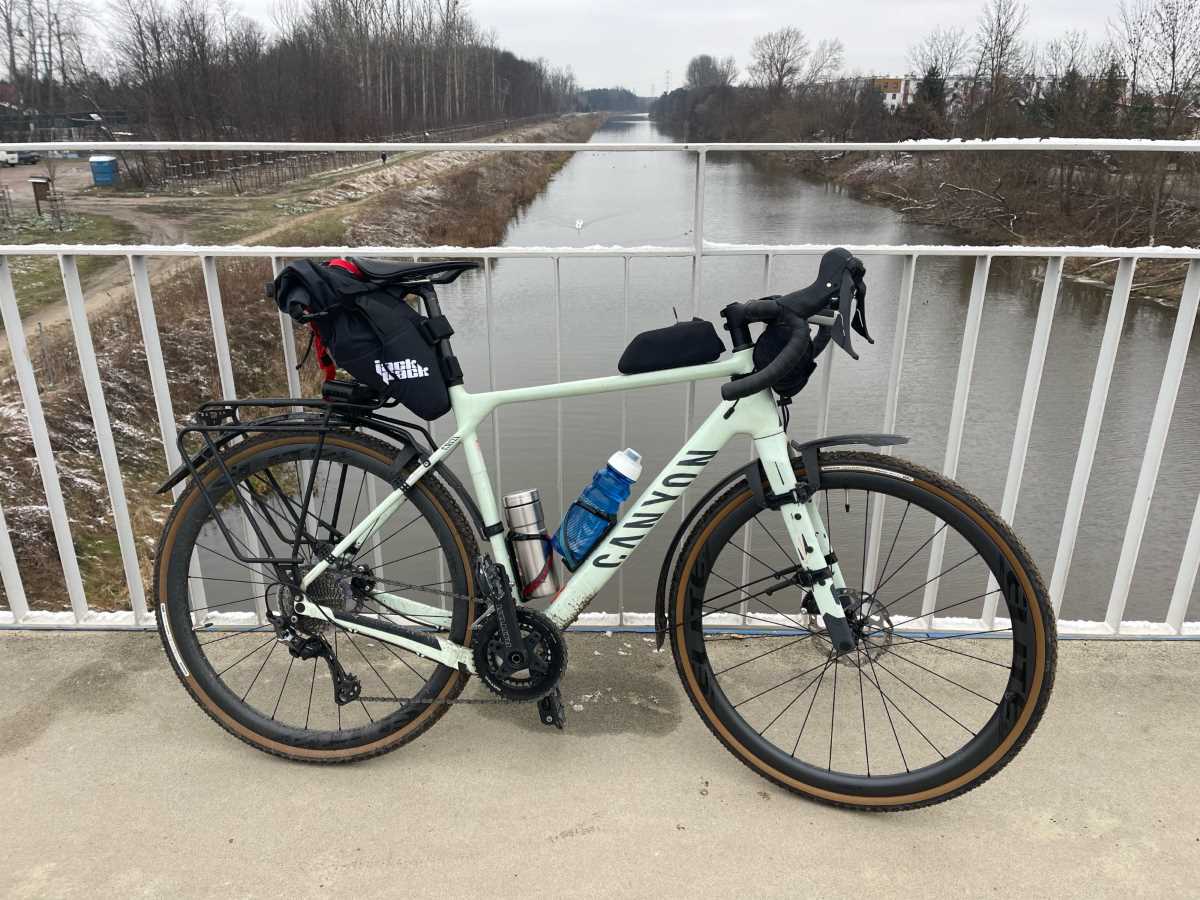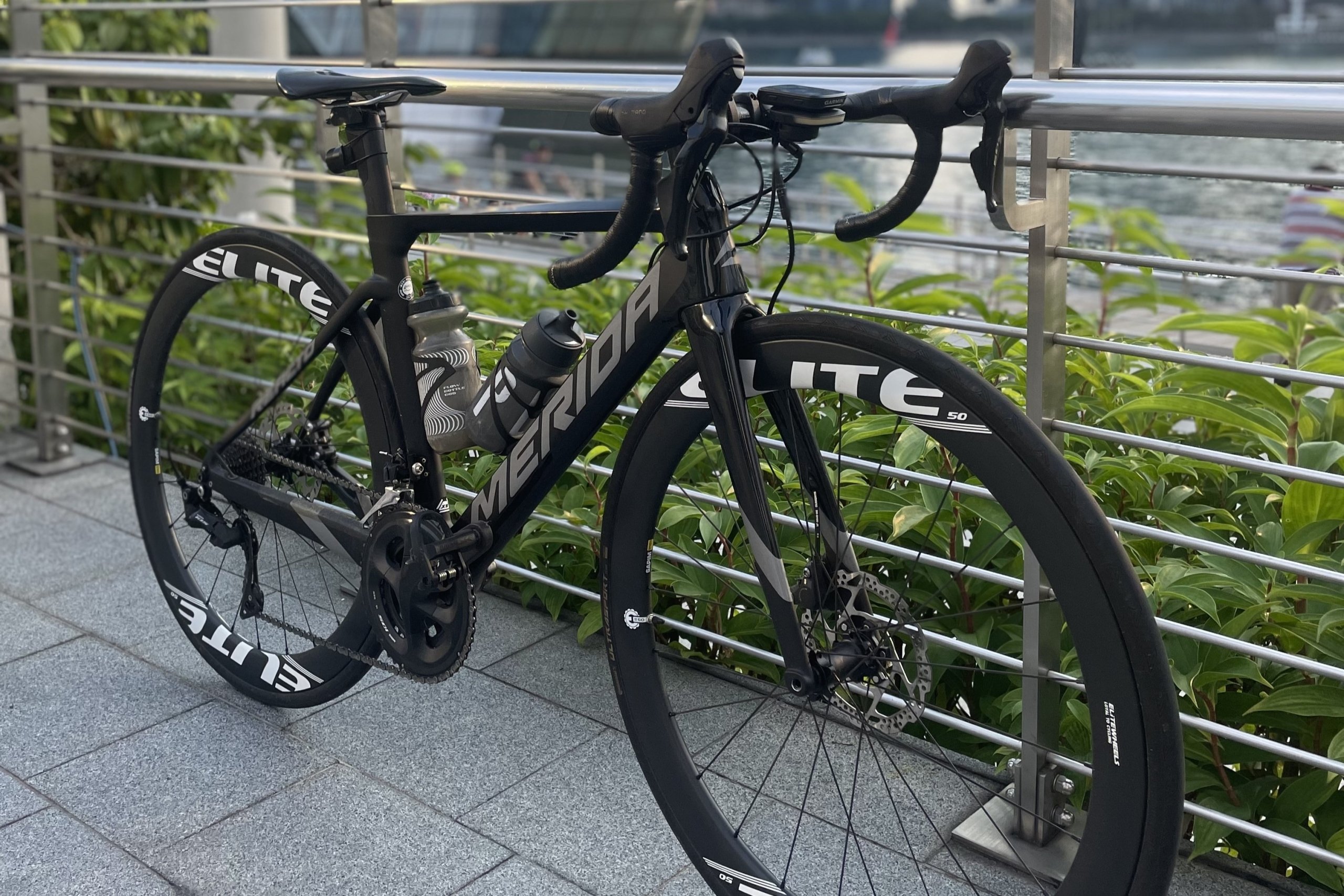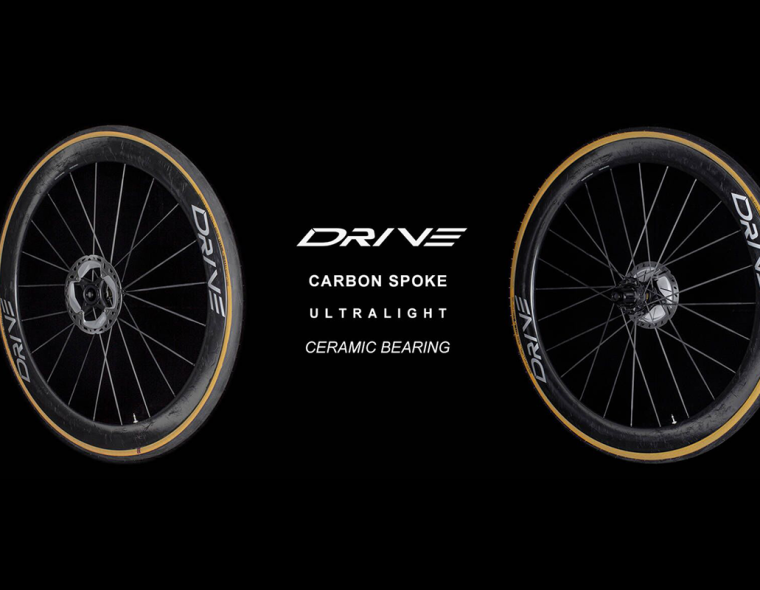Introduction:
Road cycling is a diverse and exhilarating sport, and choosing the right road bike is essential for a comfortable and enjoyable riding experience. With an array of options available, each tailored to specific riding styles and preferences, selecting the perfect road bike can be a daunting task. In this comprehensive guide, we will explore the various types of road bikes, their unique features, and the ideal riding scenarios for each.
In this article, you will learn the difference between endurance bikes, aero bikes, climbing bikes, gravel bikes, TT/triathlon bikes, women’s bikes, and touring bikes. There will also be different recommendations for wheels suitable for each kind, including our carbon spoke Drive road wheels.
Endurance Road Bikes:
Endurance road bikes are a popular category of bicycles designed to provide riders with comfort, stability, and efficiency during long-distance rides on various terrains. These bikes are engineered to strike the perfect balance between performance and comfort, making them an excellent choice for cyclists who enjoy leisurely weekend rides, multi-day tours, and endurance events.
One of the key features of endurance road bikes is their geometry. They typically have a more relaxed and upright riding position compared to aggressive racing bikes. This design allows riders to maintain a more comfortable posture, reducing strain on the back, neck, and shoulders during extended rides. The frame and fork are also constructed with materials that absorb road vibrations, further enhancing the bike’s comfort and reducing fatigue.
Endurance road bikes are equipped with wider tires compared to traditional road bikes. These wider tires, typically ranging from 28mm to 32mm or even more, offer better traction and stability on rough roads, gravel, and other challenging surfaces. This feature makes endurance road bikes more versatile and capable of handling different road conditions, making them ideal for long rides that may encompass a mix of paved roads and uneven surfaces.
Another essential aspect of endurance road bikes is their gearing system. They often feature a wide range of gears, including lower gears, which allow riders to tackle steep climbs with ease, helping them preserve energy during extended rides. The addition of disc brakes provides reliable stopping power, enhancing safety in diverse weather conditions.
Endurance road bikes also prioritize practicality and convenience. They are designed to accommodate fenders and racks, enabling riders to carry extra gear, luggage, or supplies during long-distance tours or bikepacking adventures. Moreover, many endurance road bikes come with integrated mounts for accessories like water bottles, making hydration readily accessible during rides.
In summary, endurance road bikes are the perfect companions for cyclists seeking a smooth and comfortable experience during long rides. With their relaxed geometry, wider tires, ample gear options, and versatility, these bikes are designed to conquer various terrains and distances while ensuring the rider enjoys every mile of the journey. Whether you’re a seasoned endurance cyclist or a casual enthusiast looking to explore the open road, an endurance road bike is sure to elevate your riding experience to new heights.
Aero Road Bikes:
Aero road bikes are the epitome of speed, engineering, and aerodynamics in the world of road cycling. These cutting-edge machines are purpose-built to slice through the air with minimal resistance, making them the ultimate choice for cyclists seeking maximum speed and efficiency on flat and rolling terrains.
The defining characteristic of aero road bikes is their aerodynamic design. Every aspect of these bikes, from the frame to the components, is meticulously crafted to minimize drag and optimize airflow. The frame features sleek tube shapes, teardrop profiles, and integrated components, all aimed at reducing wind resistance and allowing the bike to cut through the air like a knife. Even the cable routing is carefully hidden to enhance aerodynamics further.
The geometry of aero road bikes is slightly different from traditional road bikes, with a lower and more aggressive riding position. This position not only improves aerodynamics but also puts the rider in a more streamlined and efficient posture, translating more power to the pedals. While the lower position may be less comfortable for some, the trade-off is unmatched speed and performance, making aero road bikes the top choice for competitive racing and time trials.
Wheel choice is critical for aero road bikes. Deep-section carbon fiber wheels are commonly used, as they reduce turbulence and air resistance while providing excellent stability at high speeds. The combination of an aerodynamic frame and wheels creates a harmonious package that delivers an exhilarating ride experience, propelling riders to new levels of speed.
Aero road bikes also integrate advanced drivetrain and braking technology. High-performance groupsets with a focus on reducing friction and optimizing efficiency ensure that every ounce of energy from the rider’s legs is translated into forward motion. Powerful rim or disc brakes provide consistent and reliable stopping power, even at high speeds, boosting confidence and control during descents.
While aero road bikes shine on flat and rolling terrain, they may not be as versatile as other road bike categories on steep climbs due to the slightly heavier weight and aggressive geometry. However, advancements in design and materials have made modern aero road bikes more well-rounded and capable of handling a variety of road conditions.
Elitewheels offers a host of aerodynamic wheels. Drive wheelsets are available in 50mm and 65mm, perfect depths for aero road bikes. Marvel road wheelsets are available in 82mm. Our U/V shaped rim profiles offer the best of both worlds when it comes to aerodynamics and crosswind stability.
Climbing road bikes:
Climbing bikes are specialized bicycles designed to excel on steep ascents and challenging mountainous terrain. These lightweight and nimble machines are engineered to help cyclists conquer climbs with greater ease and efficiency, making them the ideal choice for riders who relish the thrill of reaching mountain peaks and testing their climbing prowess.
The key feature of climbing road bikes is their featherlight weight. These bikes are constructed using advanced materials such as high-grade carbon fiber or ultralight aluminum to minimize overall weight. The reduced weight ensures that cyclists can ascend steep grades with less effort, enabling them to conserve energy for longer and more demanding climbs.
The geometry of climbing road bikes is different from traditional road bikes. They often have a more upright riding position, which places the rider’s weight over the rear wheel, providing better traction and stability on steep climbs. The shorter wheelbase and steeper headtube angle contribute to improved responsiveness and agility, allowing riders to navigate tight switchbacks and hairpin turns with confidence.
Climbing road bikes also feature compact gearing setups. These bikes are equipped with smaller chainrings and wider cassettes, offering a wide range of gear ratios that make it easier for cyclists to spin the pedals efficiently on challenging gradients. This gearing system allows riders to maintain a steady cadence even during prolonged climbs, reducing the strain on their muscles and enabling them to sustain effort over extended periods.
Climbing road bikes also feature compact gearing setups. These bikes are equipped with smaller chainrings and wider cassettes, offering a wide range of gear ratios that make it easier for cyclists to spin the pedals efficiently on challenging gradients. This gearing system allows riders to maintain a steady cadence even during prolonged climbs, reducing the strain on their muscles and enabling them to sustain effort over extended periods.
To enhance comfort during mountainous rides, climbing road bikes often incorporate compliance features in their frames. This could include adding carbon layup or innovative designs that absorb vibrations and road shocks, reducing rider fatigue and providing a smoother ride.
In addition to weight reduction and gearing, climbing road bikes prioritize precise handling and reliable braking. A well-tuned and responsive handling system allows riders to maintain control during technical descents, while powerful brakes provide the confidence needed to navigate steep downhills safely.
While climbing road bikes excel on ascents, they may not be as fast or aerodynamic on flat or rolling terrain compared to other road bike categories. However, their unmatched climbing capabilities make them the preferred choice for cyclists seeking the ultimate challenge of scaling mountains and pushing their limits to new heights.
A good climbing bike needs a set of lightweight wheels. For this reason, Elitewheels designed and developed the 40D and 40V wheelsets, weighing 1255 grams and 1260 grams for the pair respectively. They are currently being raced by multiple pro teams, and can offer the edge when going for a KOM.
Time Trial (TT) Bikes:
Time trial bikes, also known as TT bikes or triathlon bikes, are specialized racing machines designed for one purpose: maximum speed against the clock. These aerodynamic wonders are finely tuned to deliver unrivaled efficiency and speed, making them the weapon of choice for cyclists participating in time trials, triathlons, and races against the clock.
The defining feature of time trial bikes is their aerodynamic design. Every aspect of these bikes, from the frame to the components, is meticulously crafted to minimize wind resistance and reduce drag. The frame features a streamlined shape with teardrop profiles and integrated components, allowing the bike to cut through the air with minimal effort. The rider’s position is also optimized for aerodynamics, with a lower, flatter back, and aerobars that provide a more efficient frontal area and less wind resistance.
Time trial bikes often employ deep-section carbon fiber wheels, which further enhance aerodynamics and stability at high speeds. The combination of an aerodynamic frame and wheels creates a harmonious package that allows riders to maintain high speeds with less energy expenditure, making them ideal for solo efforts against the clock.
To maximize power transfer and minimize weight, time trial bikes use lightweight materials like carbon fiber. The frames are stiff, ensuring that every ounce of energy generated by the rider’s pedal strokes is efficiently transferred to forward motion, resulting in impressive speed and acceleration.
Time trial bikes feature unique gearing setups optimized for flat and rolling terrain. Often equipped with larger chainrings and smaller cassettes, these bikes enable riders to maintain a high cadence and sustained power output during time trials. The positioning of the gear shifters on the aerobars allows for seamless and quick gear changes without compromising the rider’s aerodynamic posture.
Due to their focus on aerodynamics and speed, time trial bikes may sacrifice some comfort in favor of performance. The aggressive geometry and lack of suspension mean that they are not as forgiving on rough roads, making them best suited for smooth, well-paved surfaces.
In order to give time trialists and triathletes a wheelset that offers the marginal gains to win, Elitewheels has designed the Velo TT wheels from the ground up. The wheels are more than just aero, as their high density PMI core allows them to be exceptionally stiff, allowing for excellent power transfer. Cyclist Levente Lukacs achieved the world record for the longest single triathlon event using the Velo TT Disc wheelset and the Drive 65D wheelset.
Gravel Bikes:
Gravel bikes are a versatile and adventurous category of bicycles designed to handle a wide range of terrains, making them the go-to choice for cyclists who crave exploration and seek to venture beyond traditional road routes. These rugged yet agile machines blend the best features of road bikes and mountain bikes, providing riders with the freedom to conquer both paved roads and rough gravel trails.
The defining feature of gravel bikes is their robust construction. The frame geometry strikes a balance between road and mountain bike designs, offering a more relaxed and stable riding position compared to aggressive road bikes. This more upright posture ensures greater comfort during long rides and provides better control over rough and unpredictable surfaces.
Gravel bikes boast wider tires, typically ranging from 32mm to 42mm or more, with added traction and durability compared to traditional road bike tires. These wider tires offer better grip and stability on loose gravel, dirt, and uneven terrain, allowing cyclists to confidently explore off-the-beaten-path routes and enjoy new riding experiences.
In addition to their sturdy frames and wider tires, gravel bikes often include additional features to enhance their versatility. Many models have mounting points for racks, fenders, and water bottle cages, allowing riders to carry extra gear for bikepacking adventures or long-distance touring. Some gravel bikes even have built-in suspension, either in the form of front forks or seat post suspensions, to further improve comfort on rough terrain.
Gravel bikes come equipped with versatile drivetrains that offer a wide range of gear ratios, enabling cyclists to handle steep climbs and maintain speed on flat or rolling sections. They may include a single chainring or multiple chainrings paired with a wide-range cassette, allowing riders to tackle diverse terrain with ease.
The disc brakes commonly found on gravel bikes offer reliable stopping power, ensuring consistent performance in various weather conditions. The superior braking capability gives riders the confidence needed for descents on gravel tracks and unpaved roads.
Gravel bikes are not limited to a single type of riding, making them an excellent choice for cyclists seeking versatility and exploration. Whether it’s long-distance touring, bikepacking, off-road adventures, or simply enjoying a smooth ride on country roads, a gravel bike opens up a world of possibilities for riders who desire to explore new horizons and embrace the spirit of adventure.
Elitewheels’ ultralight Drive G45 gravel wheelset is designed with performance in mind for gravel cyclists looking to upgrade. At 1300 grams, it makes climbs effortless. Replaceable carbon spokes allow for the wheelset to be even more aero.
Touring Bikes:
Touring bikes are the ultimate adventure companions, purpose-built to carry riders on long-distance journeys and explorations. These reliable and sturdy bicycles are designed to handle the rigors of extended travel, making them the top choice for cyclists who seek to embark on epic tours and self-supported expeditions.
The hallmark feature of touring bikes is their robust construction. The frames are typically made from steel or other durable materials, providing excellent strength and stability to handle the weight of gear and luggage. Touring bikes often have a comfortable and relaxed geometry, allowing riders to maintain an upright position for extended periods, reducing fatigue during long days on the saddle.
Touring bikes are equipped with wide and sturdy tires, usually ranging from 32mm to 42mm in width, providing better traction and stability on various road surfaces, including rough roads, gravel paths, and even light off-road trails. The frames often have numerous mounting points for racks, fenders, and water bottle cages, enabling cyclists to carry ample supplies and gear for self-supported travel.
In addition to their robust frames and wide tires, touring bikes feature a reliable and versatile drivetrain. They typically come with a wide range of gears, including lower gears for tackling steep climbs while loaded with gear. This ensures that cyclists can maintain a steady pace, even on challenging terrain, and efficiently cover long distances day after day.
Touring bikes also incorporate comfortable and durable components. Many models feature comfortable saddles, ergonomic handlebars, and vibration-damping features to reduce rider fatigue and discomfort during extended rides. Additionally, reliable braking systems provide the stopping power necessary when riding with additional weight.
Touring bikes are designed to provide a smooth and stable ride, making them an excellent choice for cyclists who want to explore new regions, cross continents, or embark on memorable bikepacking adventures. Whether you’re a seasoned touring enthusiast or a newcomer to long-distance travel, a touring bike is your trusty steed, carrying you and your dreams of exploration to far-off horizons.
Elitewheels recommends Marvel wheelsets for touring. They use Pillar and Sapim CX-Rays. Due to their popularity, they can be found at bike shops all over the world.
Women-Specific Road Bikes:
Women-specific road bikes, also known as women’s road bikes, are specially designed bicycles that cater to the unique anatomical and biomechanical needs of female riders. These bikes offer a comfortable and efficient riding experience, making them an excellent choice for women cyclists who seek performance, comfort, and style on the road.
One of the key features of women-specific road bikes is their frame geometry. These bikes typically have a more compact design with shorter top tubes and taller head tubes. This allows for a more upright riding position, which is more comfortable for many women and helps reduce strain on the neck, back, and shoulders.
Women’s road bikes also come with women-specific saddles designed to provide optimal support and comfort for female anatomy. The handlebars and grips are often ergonomically shaped to accommodate smaller hands and provide a secure grip during long rides.
In addition to the frame and components, women-specific road bikes may have different crank lengths and narrower handlebars, which take into consideration the average female body dimensions. These small but significant adjustments contribute to better biomechanics and more efficient power transfer during pedaling.
Women’s road bikes are available in a wide range of designs, colors, and styles, allowing cyclists to choose a bike that matches their personal preferences and reflects their individuality.
Conclusion:
From classic road bikes for long-distance comfort and performance to specialized bikes for specific racing disciplines and adventure road bikes for exploring off the beaten path, there is a road bike for everyone. Before making a purchase, consider your riding style, goals, and budget to select the road bike that best complements your cycling journey.


